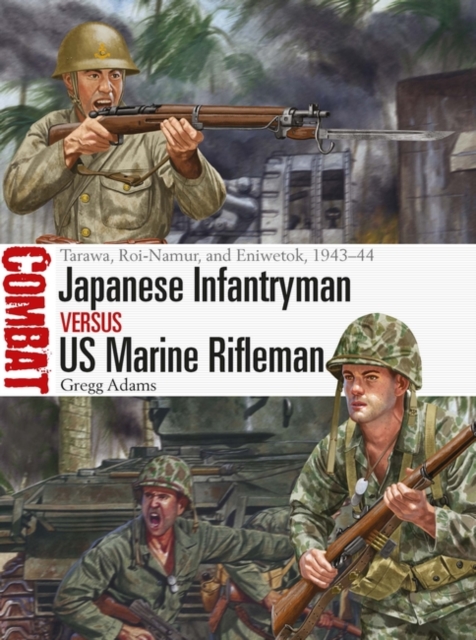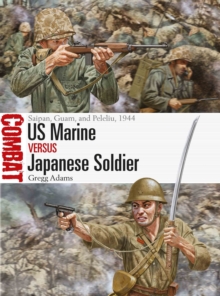
Japanese Infantryman vs US Marine Rifleman : Tarawa, Roi-Namur, and Eniwetok, 1943-44 Paperback / softback
by Gregg Adams
Illustrated by Johnny Shumate
Part of the Combat series
Paperback / softback
Description
Featuring evocative artwork plates and carefully selected photographs, this book assesses the US Marines and Japanese troops who contested the islands of Tarawa, Roi-Namur, and Eniwetok during 1943–44. On November 20, 1943, amphibious vehicles carrying Marines of the 2d Marine Division reached the shores of Betio Island in the Tarawa Atoll, defended by a determined Japanese garrison that would fight to the last man.
This began a test by combat of over two decades of US studies, analyses, and planning for capturing and defending naval bases in Micronesia.
The Tarawa assault was followed in February 1944 by the rapid capture of the Kwajalein and Eniwetok atolls in the Marshall Islands. In these battles US Marines fought a mix of Imperial Japanese Navy and Imperial Japanese Army ground units.
All but a handful of the defenders, whether they were organized ground combat troops or infantry improvised from aviators and service troops, were determined to die for the Emperor while killing as many of the enemy as possible.
In this study, Gregg Adams shows how the US Marine Corps and US Navy drew upon these pivotal actions to improve their tactics, organization, and equipment for the next round of amphibious operations.
He also explains how their Japanese opponents – realizing that isolated island garrisons were doomed to destruction or isolation if the Imperial Japanese Navy could not defeat the US Navy at sea – moved from seeking to repel an invasion to one inflicting maximum American casualties through prolonged defensive fighting.
Information
-
Less than 10 available - usually despatched within 24 hours
- Format:Paperback / softback
- Pages:80 pages, Colour artwork plates and maps; black & white and colour photographs and illustrations.
- Publisher:Bloomsbury Publishing PLC
- Publication Date:26/10/2023
- Category:
- ISBN:9781472857910
Other Formats
- EPUB from £11.51
- PDF from £11.51
£15.99
£13.65
Information
-
Less than 10 available - usually despatched within 24 hours
- Format:Paperback / softback
- Pages:80 pages, Colour artwork plates and maps; black & white and colour photographs and illustrations.
- Publisher:Bloomsbury Publishing PLC
- Publication Date:26/10/2023
- Category:
- ISBN:9781472857910










